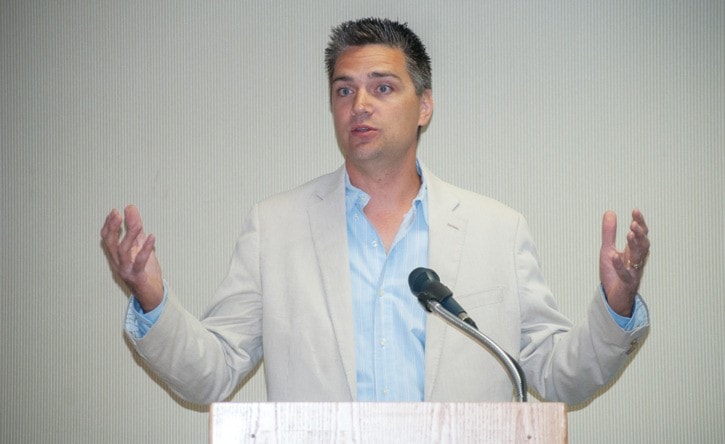B.C. Transportation and Infrastructure Minister Todd Stone is in Ottawa this week and he’s hoping to return with good news.
During a media conference call to comment on the provincial health officer’s motor vehicle crash report released March 31, Stone said he is confident the province will be getting infrastructure funding for highway improvements in the near future.
In his report, Where the Rubber Meets the Road: Reducing the Impact of Motor Vehicle Crashes, provincial health officer Perry Kendall noted that while a mere 15 per cent of the B.C. population resides in the Interior Health region, 38.8 per cent of motor-vehicle fatalities occur here – many of them on two-lane sections of the Trans-Canada.
In response to a question about plans for the stretch of highway from the Chase area to the Alberta border, known to many as “the highway of death,” Stone said he and Amarjeet Sohi, the newly appointed federal minister of infrastructure and communities, have already met twice and are building a good working relationship.
“He is very much aware just how important the Trans-Canada is from Kamloops to the Alberta border, not just from a trade and economic perspective but, first and foremost, from a safety perspective for residents and folks who travel that corridor on a regular basis,” said Stone. “As the rep from Kamloops, Salmon Arm is in my backyard and I spend a lot of time on the highway. I am the first one to hear about serious crashes and, tragically, fatalities; that’s why I’m doing what I can and have done as much as possible for the last three years to accelerate these projects on the TCH.”
Stone said the province has spent close to $800 million in the last 10 years and has big plans for the future.
“We have an ambitious program that, when leveraged with federal dollars, will be in excess of a billion over the next eight years,” he said, noting he has already profiled the Salmon Arm West project, which includes a section of four-laning and replacement of the Salmon River Bridge. “The design is done, community consultation is done and provincial dollars have been allocated for this project. We just need a federal partner to saddle up beside us and I am very confident we will see that happen in the not-too-distant future.”
Stone says the province will “review in tremendous detail” the 28 recommendations contained in Kendall’s report released last Thursday.
“Though B.C. has seen a notable two-thirds decrease in motor vehicle crash fatalities since 1996, we could still achieve lower rates of fatalities and serious injuries – especially in vulnerable road users,” says Kendall. “My report makes a number of evidence-based recommendations to reduce the burden of motor vehicle crashes on our health and improve road safety in British Columbia.”
Speed, impairment and distraction were the top contributing factors recorded by police for motor vehicle crashes that resulted in fatalities in British Columbia between 2008 and 2012.
The 28 recommendations in the report are focused on taking a strategic and comprehensive approach to road safety in B.C., including safe road users (such as driver behaviours and conditions), safe speeds, safe roadways, safe vehicles, updating education and enforcement, and expanding research and data collection related to road safety.
For the report and a list of the 28 recommendations, go to www.health.gov.bc.ca/pho/reports/annual.html.
